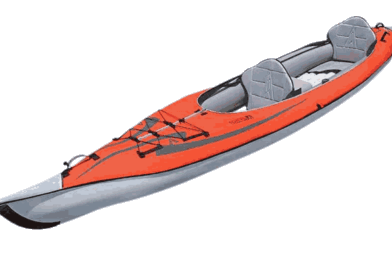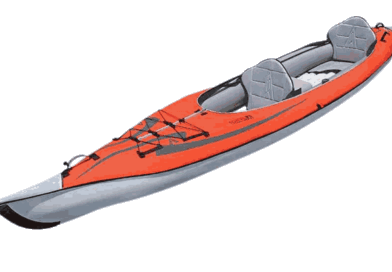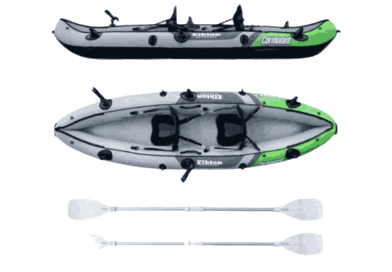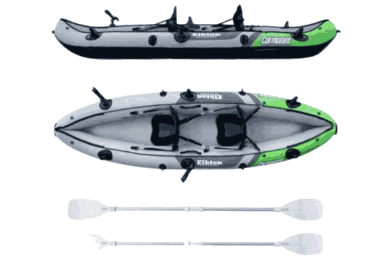What is a K1 vs C1 Kayak? Answering FAQs
Everything You Need to Know About Kayaking: From C1 to K1 and Beyond!
Are you ready to dive into the world of kayaking?
Whether you’re a newbie or an experienced paddler, there’s always more to learn about the different types of kayaks and canoes out there.
In this article, we’ve got you covered with all the essential information about C1 and C2 kayaks, K1 kayaking, OC1 and V1 canoes, and much more.
We’ll even guide you on the best kayaks for beginners and give you tips on how to master the art of paddling a C1.
So, grab your life jacket and paddle and read on to become a kayaking pro!
Table of Contents
What is a C1 kayak?
A C1 kayak is a type of closed canoe that looks like a whitewater kayak. The hull is similar to a kayak, but the canoeist kneels in custom outfitting with a higher center of gravity. C1s are fun & dynamic playboats or river-running canoes.
- C1: Closed
- CanoeLooks like: Whitewater
- KayakHull: Similar to Kayak
- Canoeist: Kneels in custom outfitting
- Center of Gravity: Higher
- Use: Fun & dynamic playboats or river-running canoes
What is a C2 kayak?
A C2 kayak is a type of canoe that is designed for two people. It is also known as a tandem canoe. The C2 kayak is used for racing & recreational purposes. It is longer than a single kayak & has more space for two people. The kayak is propelled by paddles that are held by the two people sitting in the kayak.
The paddles are used to move the kayak forward through the water.
What is the difference between C1 & C2 kayak?
C1 & C2 are canoeing classifications that refer to the size & construction of the boats. C1 is a solo kayak, while C2 is a tandem class of kayak. C1 kayaks are designed to be used by a single person & have an open deck that allows you to move around more freely.
They are typically longer & narrower than C2 kayaks, which makes them faster & more maneuverable.
Here’s a table that summarizes the differences between C1 & C2 kayaks:
| C1 Kayak | C2 Kayak | |
|---|---|---|
| Size | Smaller | Larger |
| Capacity | 1 person | 2 people |
| Speed | Faster | Slower |
| Maneuverability | More maneuverable | Less maneuverable |
What does K1 mean in kayaking?
Kayaking is a sport that involves paddling a kayak (a small boat) on water. K1, K2, & K4 are the three different sprint kayaks used in canoe sprint competitions.
The number indicates the number of paddlers in the boat. “K” stands for kayak. K1 is an individual kayak race, K2 pairs, & K4 four-person crews.
What is K1 & C1 canoeing?
C1 & K1 are types of boats used in canoeing & kayaking. C stands for canoe & K for kayak. C1 is a solo canoe & K1 is a solo kayak. In a canoe, the paddler kneels & uses a single-bladed paddle to move forward.
In a kayak, the paddler sits & uses a double-bladed paddle to move forward. Both types of boats can be used for fun activities like water sports, fishing, & traveling on water.
- C1 Canoe: 1 person, kneels, single-bladed paddle.
- K1 Kayak: 1 person, sits, double-bladed paddle.
What is K1 mean in kayaking?
K1 means a type of kayak that is used for racing on flat water. A kayak is a small boat that you sit inside & move with a paddle.
Here are the facts about K1 kayaks:
- Long & narrow to go fast, but they are also very unstable & can tip over easily.
- Have a rudder under the boat that helps them steer. The rudder is controlled by the paddler’s feet.
- Have an enclosed cockpit that can fill with water if they capsize. That’s why they are only used on calm water.
- Have different designs for sprint & marathon races.
What is the difference between OC1 & V1?
OC1 and V1 are types of waka, which are canoes with a float attached to one side. They are used for different kinds of paddling.
Here are some differences between them:
| OC1 | V1 |
|---|---|
| Has a rudder that helps steer the waka. | Does not have a rudder, so the paddler has to steer with the paddle. |
| Good for long distance paddling or training | Good for sprinting or short distance paddling |
| Easier to control and balance. | Harder to control and balance. |
| Usually made of carbon fiber or fiberglass | Usually made of wood or composite materials |
What is the most efficient kayak shape?
The most efficient kayak shape depends on the paddler and how and where they’ll paddle.
A kayak’s performance is determined by the shape of its bottom and how it interacts with the water to influence characteristics like glide, stability, and maneuverability. A V-shaped hull is a great option for speed because it can cut through the water easier than other types.
A wider kayak will be more stable than a narrow one, but a narrow kayak is usually more efficient than a wide one.
What is the weight limit on the K1 kayak?
The K1 Kayak can carry up to 220 lbs (100kg). It’s perfect for one person and can be used for all kinds of watersports activities. It’s lightweight and easy to manage so it’s great for kids of all ages.
Can 1 person use a K2 kayak?
Yes, one person can use a two-person kayak. In fact, there should be no issue using a tandem kayak if you are paddling alone. You can use the extra space for your personal items. The Intex Challenger K2 kayak is an ideal choice for an adult looking to get out on the water with a child or youth. Here are some benefits of one person paddling a two-person kayak:
- More storage space
- Added stability
- More legroom
However, there are some disadvantages of paddling a two-person kayak by yourself:
- Less maneuverability
- Harder to maintain speed.
- Heavier to transport
What style kayak is most stable?
Sit-inside (open-cockpit) kayaks are generally more stable than sit-on-top kayaks due to their design, if all other dimentions are equal.
In an open-cockpit kayak, the paddler is sitting lower in the boat, which puts their center of gravity at or near the water level.
This makes them more stable, providing a greater sense of security for the paddler.
Which is faster C1 or K1?
Sometimes, C1 can be faster than K1 in courses that have many turns and obstacles, because C1 can change direction more quickly than K1. But K1 usually has more speed than C1 in straight parts of the river, because K1 can paddle on both sides of the boat.
Here is a table that shows some differences between C1 and K1:
| C1 | K1 |
|---|---|
| One-bladed paddle | Two-bladed paddle |
| Kneel in the boat | Sit in the boat |
| Faster in turns | Faster in straight lines |
| More difficult to balance | Easier to balance |
What kayak is better for beginners?
The Perception Rambler 13.5 Tandem Kayak is a great kayak for beginners. It is a sit-on-top kayak that is easy to get in and out of, and it is very stable in the water. It has a weight capacity of 550 pounds, so it can hold two people and their gear. The kayak is made of high-density polyethylene, which makes it durable and resistant to UV rays.
It also has adjustable footrests and padded seats for added comfort.
| Kayak | Type | Price |
|---|---|---|
| Perception Rambler 13.5 Tandem Kayak | Sit-on-top | $799 |
| Wilderness Systems Pungo 120 | Sit-in | $1,059 |
| Pelican Mist 100 XP Angler | Sit-on-top | $499 |
How do you paddle a C1?
- Sit on your knees with your feet flat on the bottom of the boat.
- Hold the paddle with both hands.
- Place one end of the paddle in the water.
- Pull back with your top hand while pushing forward with your bottom hand.
- Repeat on the other side
Frequently Asked Questions:
What are the different types of kayaks and canoes in terms of classification?
The different types of kayaks and canoes can be classified based on their shape, size, material, and intended use. Examples include recreational, touring, whitewater, sit-on-top, inflatable, and traditional canoes.
What are the key differences between K1 and C1 kayaking and canoeing?
The key difference between K1 and C1 kayaking and canoeing is the type of paddle used. In K1, a double-bladed paddle is used while in C1, a single-bladed paddle is used. Additionally, kayaking involves sitting with your legs stretched out in front while canoeing involves kneeling inside the canoe.
What is the most stable type of kayak for beginners to use?
The most stable type of kayak for beginners to use is a recreational kayak. These are wider and shorter, making them more stable and easier to maneuver.
What is the weight limit for a K1 kayak and can a single person use a K2 kayak?
The weight limit for a K1 kayak depends on the specific model but typically ranges from 200-300 pounds. A K2 kayak is designed for two people, but a single person can use it.
What is the proper technique for paddling a C1 kayak?
The proper technique for paddling a C1 kayak involves using a J-stroke, which involves placing the paddle in the water at an angle and pulling back towards the paddler while simultaneously pushing the blade away from the boat. This helps to maintain a straight course and improve efficiency.
What Can You Do Now?
Now that you have learned about different types of kayaks and canoes, it’s time to find the perfect one for you! Check out our review of the 12 best kayaks on the market and choose the one that suits your needs. Don’t wait any longer; start exploring the waterways today!
Now that you know more about different types of kayaks, you can make an informed decision on which one to purchase. If you’re still unsure, take a look our review of the 12 best kayaks on the market to find the perfect one for your needs.




